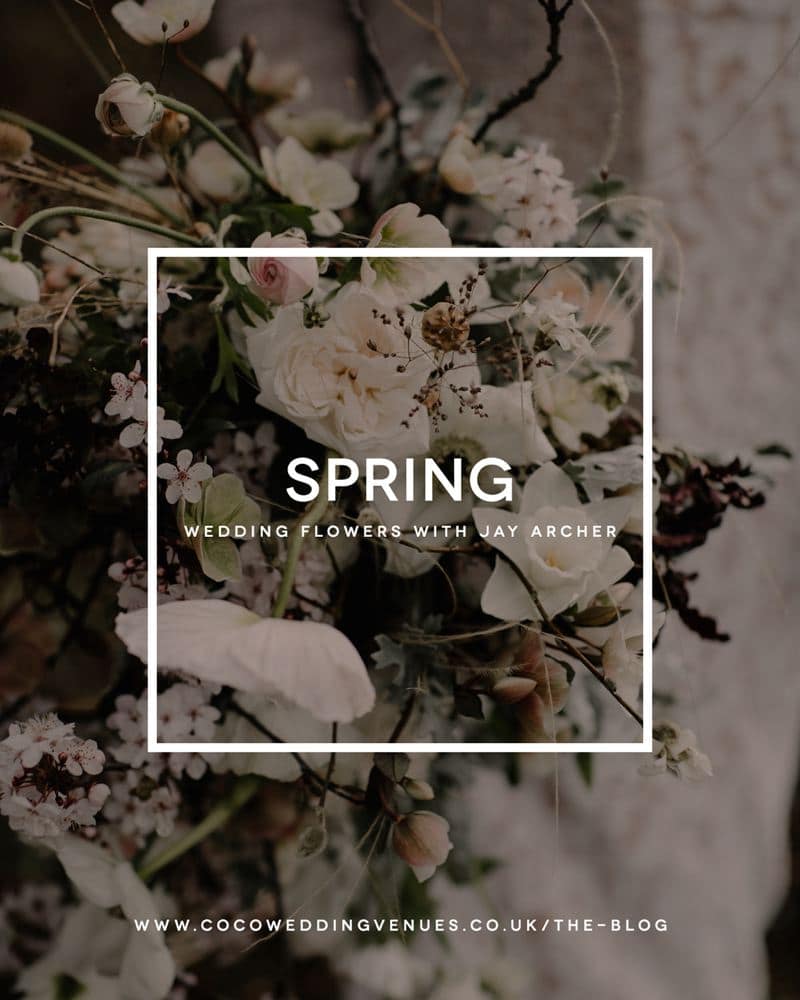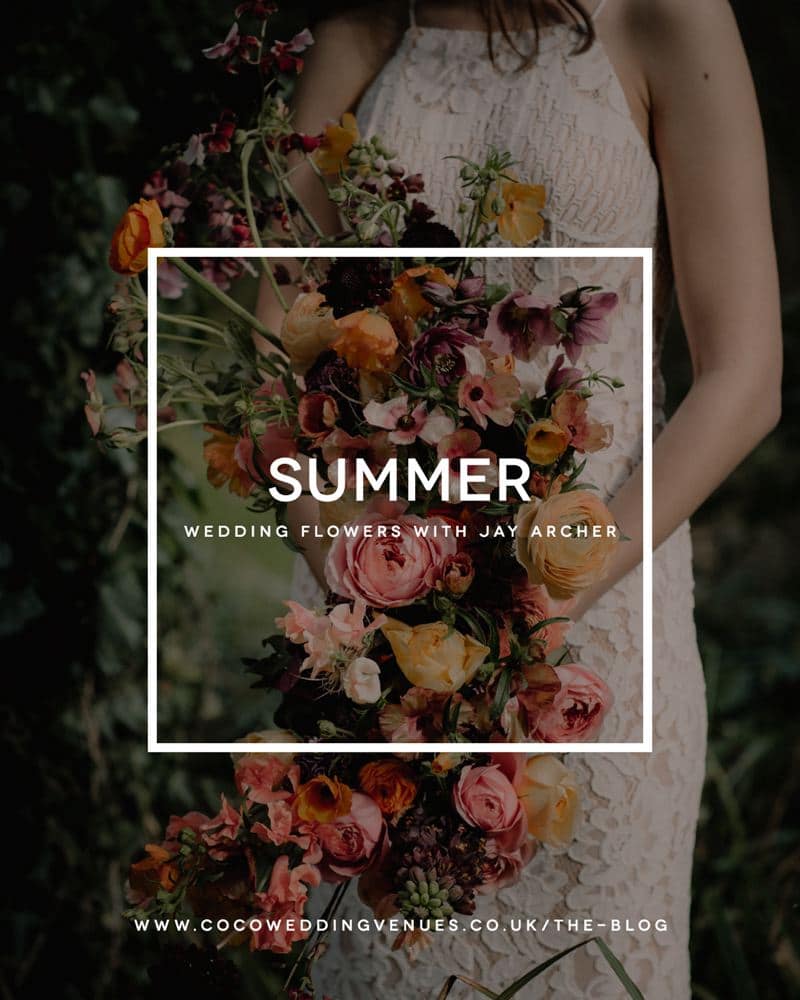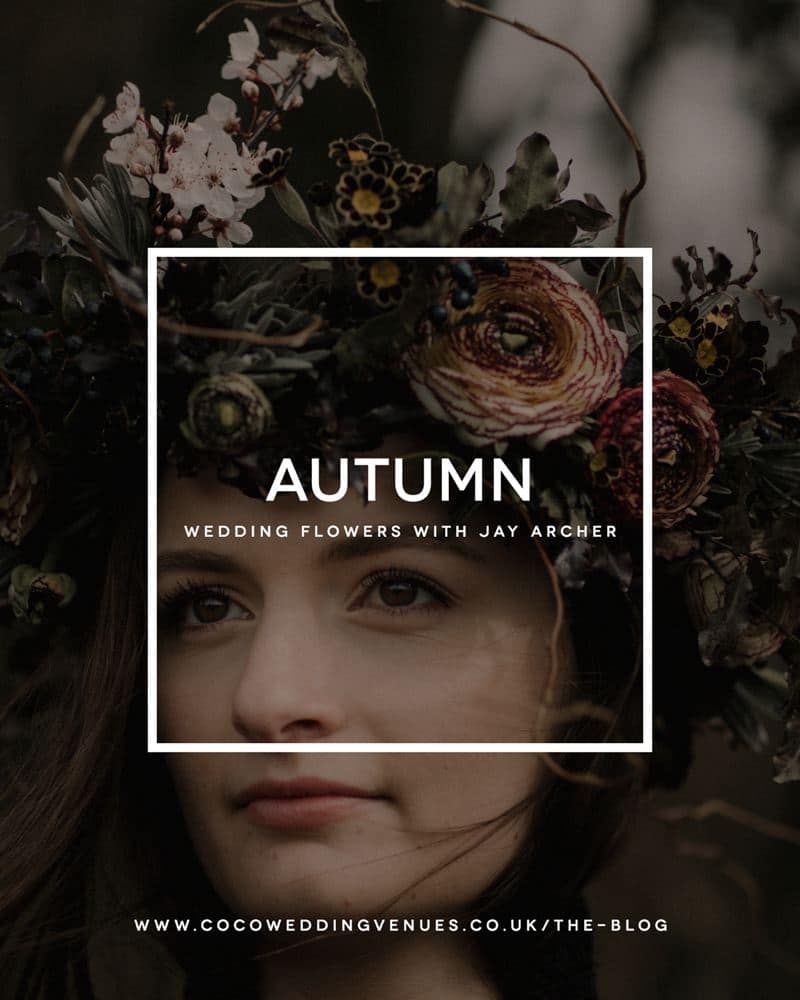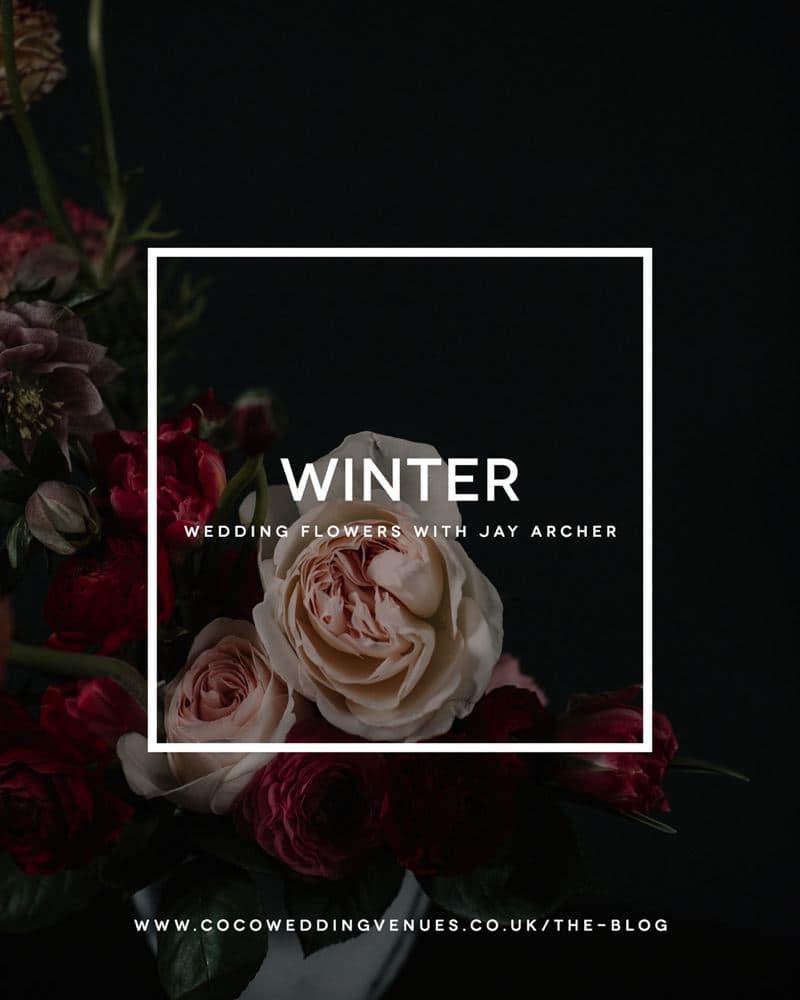Wedding Flowers Part II: Which Flowers Are In Season?
If you missed the first instalment of this three-part floral series then it’s a definite must-read and you can find it here. I urge you to take a peek if you want to learn all about wedding flower budgets! It’s an eye-opening piece and one I wished I had read when planning my own floral story.
Jay Archer is the author of this series and she’s beyond incredible in so many ways. Honest, creative and just a little bit magic, I had the pleasure of working with this lady at Pynes House last month on our latest editorial and it was such a joy witnessing this floral genius in action. What Jay doesn’t know about flowers probably isn’t worth knowing!
But what is worth knowing is today’s meaty topic – seasonality. What do the seasons actually mean to florists and how will this influence your choice as a bride…? Read on to find out, oh and don’t forget to pin the relevant seasonal bookmarks so you can return at a later planning date.
Jay:
Seasonal does not mean British grown or local, nor does it mean cheaper. That is the biggest misconception when it comes to wedding flowers – all flowers I suppose.
Using seasonal quite simply means something is in ‘season’ – it is at it’s best now. English grown roses, for example, are at their best June – September whilst Peonies thrive in May – early July.
You can get most flowers out of season nowadays; Norway grows and stores peonies in snow but they definitely won’t look their best! These flowers will be poorer quality and probably won’t smell quite as beautiful. It’s like strawberries at Christmas which are often grown in Peru or Spain – they cost more and just don’t taste like a sweet, sticky, delicious strawberry so why would you..?!
Being clever with your budget means you can watch the pennies and have seasonal produce at the same time. If you love roses but cannot afford to use them throughout your scheme (at £3 per stem and up to £5 for David Austin’s) then consider using these in just your bridal bouquet.
Before seeing your florist, you need to work out what’s important to you. Write a list of your must-haves and nice-to-haves, work with the seasons and ensure your floral ideas are complimentary to their natural surroundings and the choice of wedding venue. Being clear about your budget will mean your florist will recommend the right flowers for you.
British flowers are generally sold in smaller ‘wraps’ or individual stems, so if your florist doesn’t use British grown then this might mean they’ll be buying your flowers in bulk. Imports can come in ‘wraps’ of of up to 50, for example ranunuculus and anemones are always sold in large quantities so this will have an impact on your budget as you will need to pay for the full ‘wraps’ rather than just one or two stems.
Buying flowers in bulk can be cost effective when they’re in season – Spring bulbs, autumn foliage, aummer cornflowers/scabious, winter branches and amaryllis are all good, purse friendly options. So have a chat with your florist and make sure you’re armed with all the questions you might want to ask.
So, what’s is in season when..?


Spring
Ah, Spring – the most scented month! Think striking little spears of pale blue and ice white muscari, multi-tonal almost pearlescent hellebore and the tiny nodding heady scented bells of lily of the valley! This particular specimen is one of the most desirable wedding flowers and available all year from a chap in Holland at about £2 per stem!
Also in Spring:
- Blossom – apple, quince, cherry, magnolia, prunus, spirea and others.
- Tulips – French tulips are a real treat, with their long stems and peachy heads. Parrot tulips and English tulips are available in every colour you can imagine!
- Wallflowers – available from local growers only usually. Their petals have the most amazing colour variations which remind me of a Turner sky!
- Ranunculus – peonies are not quite about yet so ranunculus are the next best thing and beautiful in their own right.
- Anemones – the much-desired navy eyed variety are more expensive than their white centred counterparts. I think the white ones are pure and classic.
- Narcissi and paper whites – The scent of these little flowery fireworks is quite something! Strong and heady, they can be overwhelming when used in table centres but good for bouquets.
- Forget-me-nots – tiny, delicate dots of sky blue. Dreamy.
- Fritillaries – beautiful little nodding heads of dusky purple with a chequered pattern.
Working to a palette of pastel pinks, creamy whites, vintage dusky pinks and soft blues, I’d suggest mixing spring flowers with catkins, twigs and senecio foliage.


Summer
Peony season! The ones they all go mad for!
Summer is bright, bold and energetic, lots of people marry in outdoor ceremonies and marquees so think about colour. White flowers look great on the day but may not show up in your photographs at all. Using a base of beech, birch and hazel think jewel tones of pinks, deep midnight blue and oranges.
Delphiniums and roses are at their best now, along with:
- Stocks – scented spears of lilac, purple, pink, fuchsia, white or nude peach.
- Foxgloves – now available in peach, blush and violet.
- Sweet peas – an English garden classic.
- Flowering herbs such as mint, rosemary, bay and sage. Mixing these with your arrangements adds to the multi-sensory experience and frankly, are delicious. And could tie in with your cocktails..?
- Campanula – pretty bells of white and lilac.
- Snapdragons – bright and bold! Do you remember playing with them as kids..?
- Scabious and zinnia – other cottage garden favourites.
Using accent colours of gold or champagne works well with bold summer tones, or keep it simple with pretty cut glass. Late summer sees hops become available which are great for dressing big spaces as they come on 3 metre vines and average about £35 – £50 (when the florist has added delivery/ labour etc.)


Autumn
Autumn is hands down my absolute favourite season – to be in, to work with and create for!
It’s a great month for colour and if you’re on a budget you can cut back on flowers and use the readily available foliages all around. Berries, fruiting branches and dahlias come into their own this time of year and bloom (larger headed) chrysanthemums are to die for:
- Viburnum berry – a steely blue hard berry, with dark green foliage. Cute in buttonholes.
- Blackberries, sloe and apples – arching, great branches of laden fruit is luxurious and typically English.
- Hydrangea – available throughout the summer, they’re at their best now, especially the English ones. In a range of colours, the pink and deep reds are ever popular with brides and the natural foliage is a winner.
- Roses – soft English rose bushes have a second flush around September/early October and can be great additions to bud vases and bouquets alike.
- Spindleberry, albeia and pheasants bush – there are some beautiful fruiting and flowering shrubs around at this time.
- Gourds and squashes – what’s not to love..?!
Working with your florist to create foliage-only displays means you get the best of the season, which is easy on the purse too! Red, gold and coppers are all classic autumn colours but you could opt for a modern twist with wine, puce and blush pinks with the natural golden tones of dried grasses.


Winter
Clients are often concerned there’s not a lot about at this time, but there is! Although not English, most of the spring flowers are available at market with ranunculus, anemones and tulips – all firm florist favourites.
- Amaryllis – huge, majestic heads of velvety lushness in deepest reds to palest pink.
- Flowering viburnum – the berries are available too.
- White heather – again, there are some beautifully unusual shrubs around at this time, both English and imported.
- Euphorbia – available in peach, salmon, red, pink, orange, yellow and white.
- Skimmer – dainty dark red berries with glossy dark green leaves.
- Genista – scented blossom.
- Wax flower – a great alternative to gypsophilia.
- Brassica – ornamental cabbages!
- Hypericum berry – winter is all about texture, and mixing these colourful little pops to bouquets and buttonholes works really well.
Whatever you do in winter, add candles! Warming up all those textures with soft candlelight is the way forward. Long dining tables work well at this time of year and dressing the space with moss and buried candlesticks is a quirky and original touch. Dark reds and winter whites work well as this time.
So, to recap; Seasonal doesn’t always mean cheaper! Whatever the season, there are colours for you – essentially you can get any colour at any time, but working with the season gives you a greater selection.
Look out for the final part when we go back into the JAFD Flower School with Katrina Otter Weddings & Hannah Duffy Photography for a spot of bouquet and button-hole making!
Lots of love…